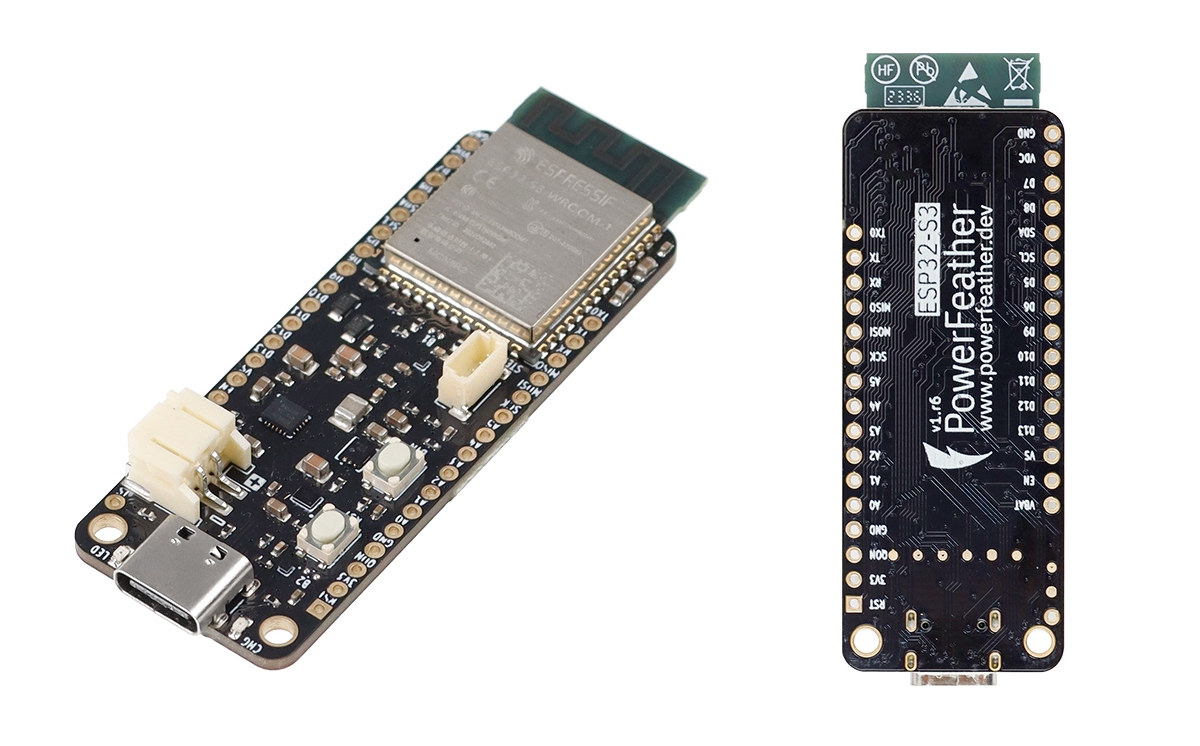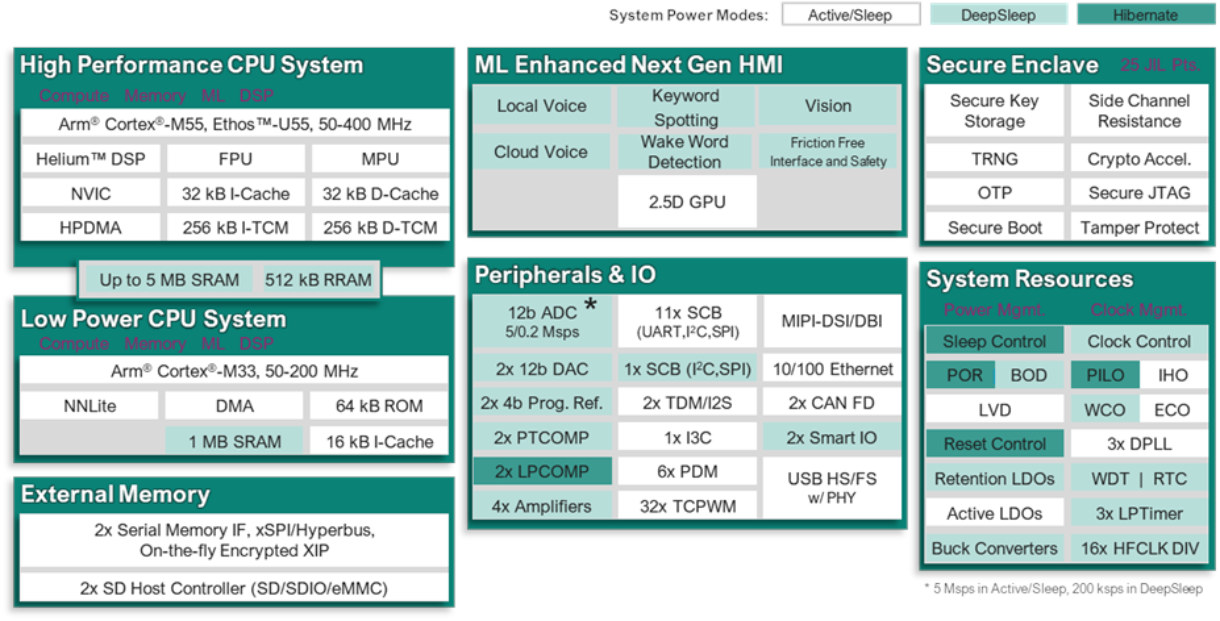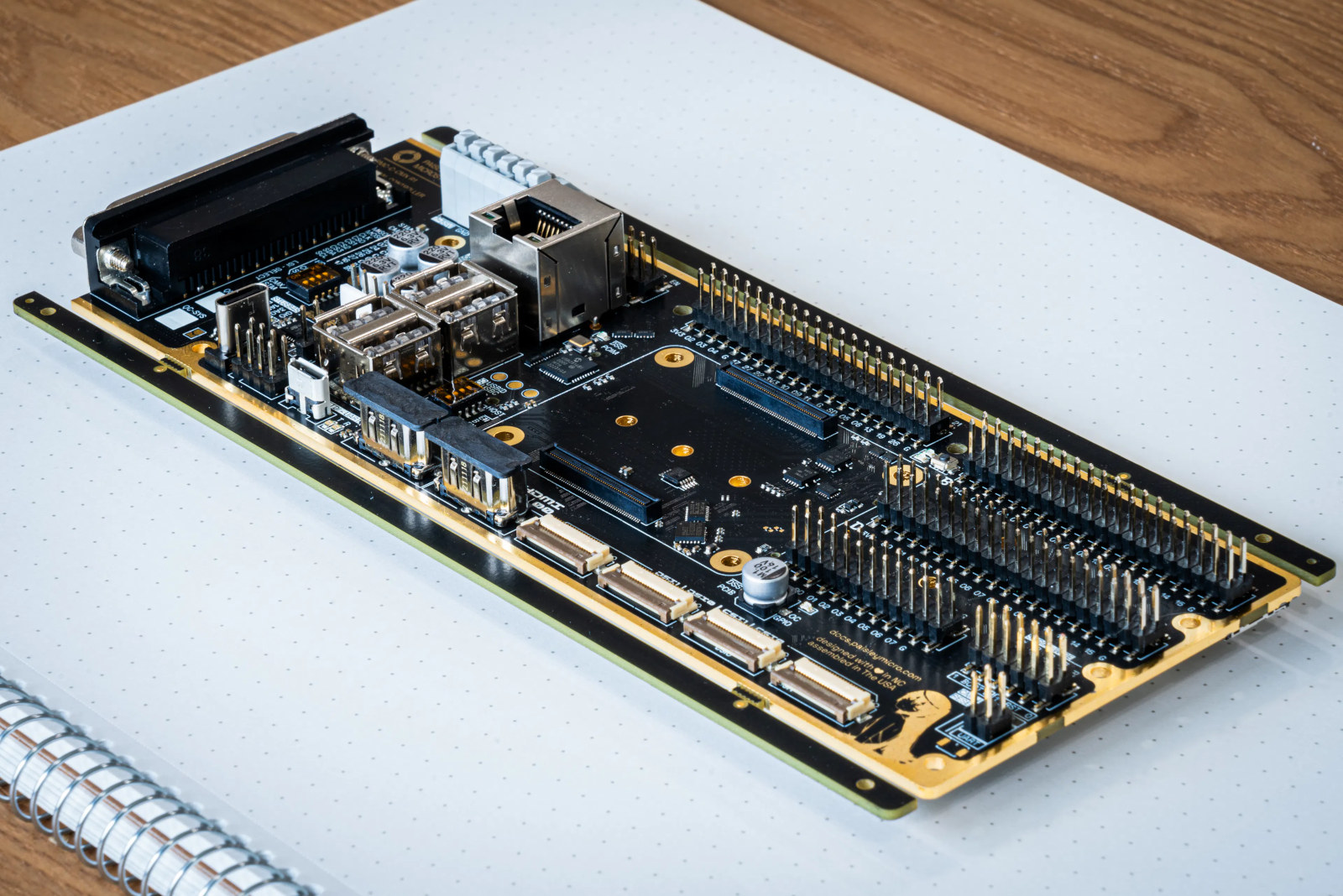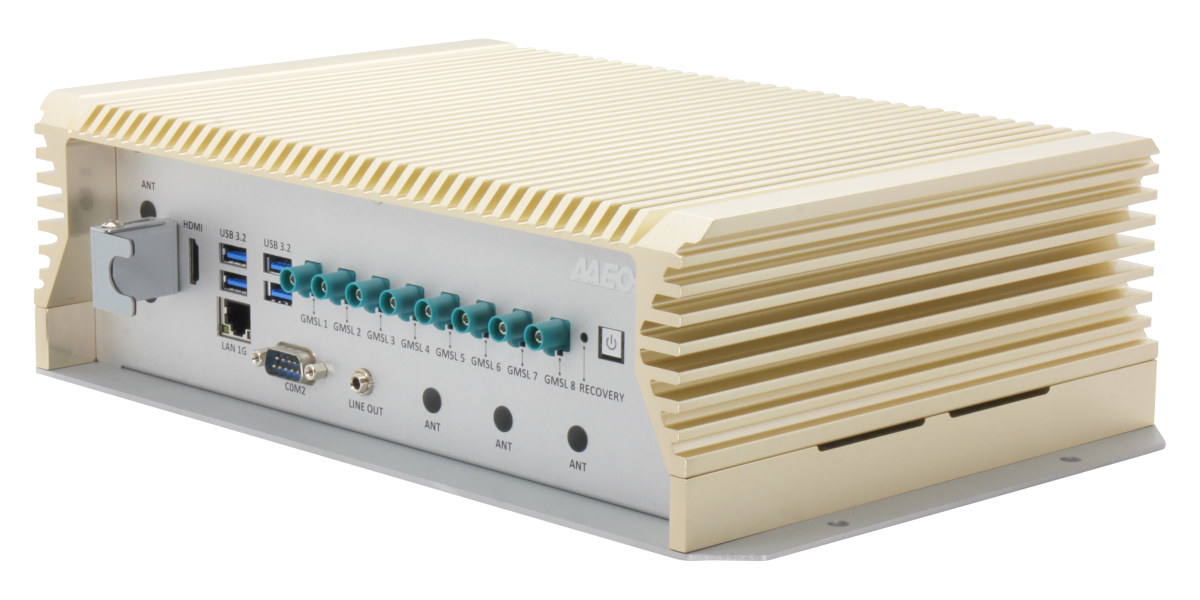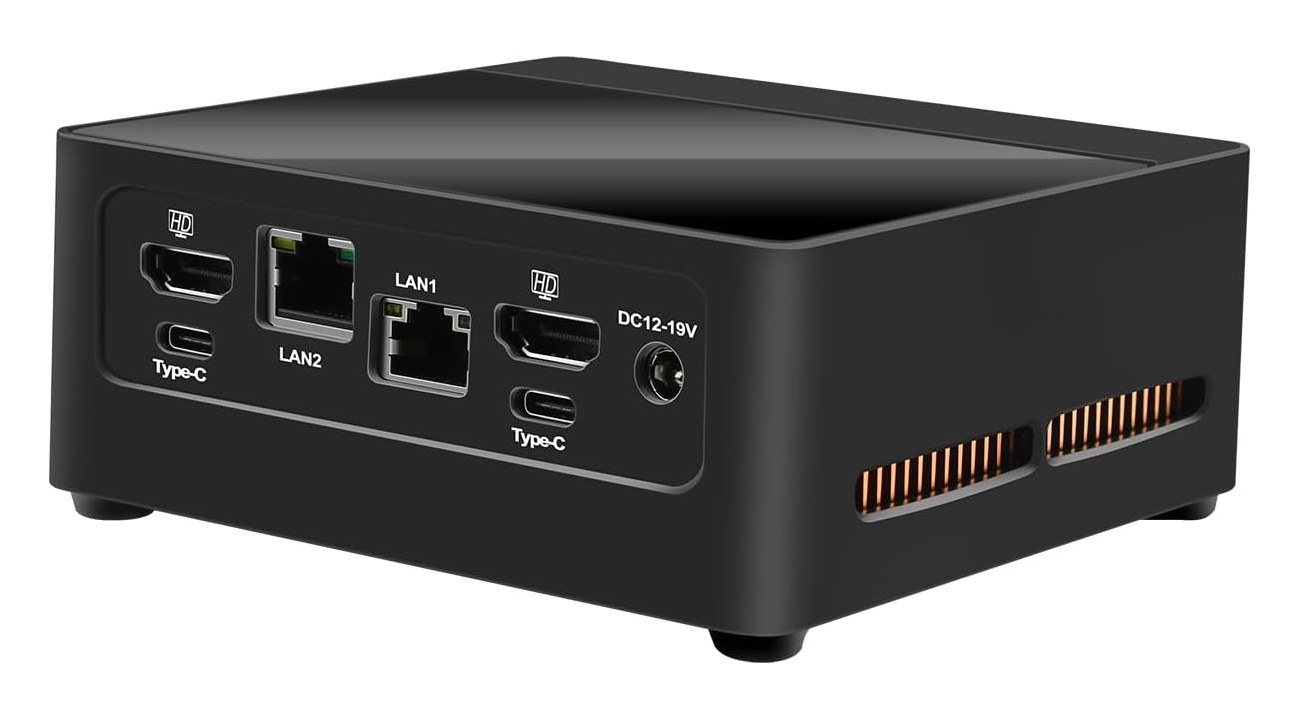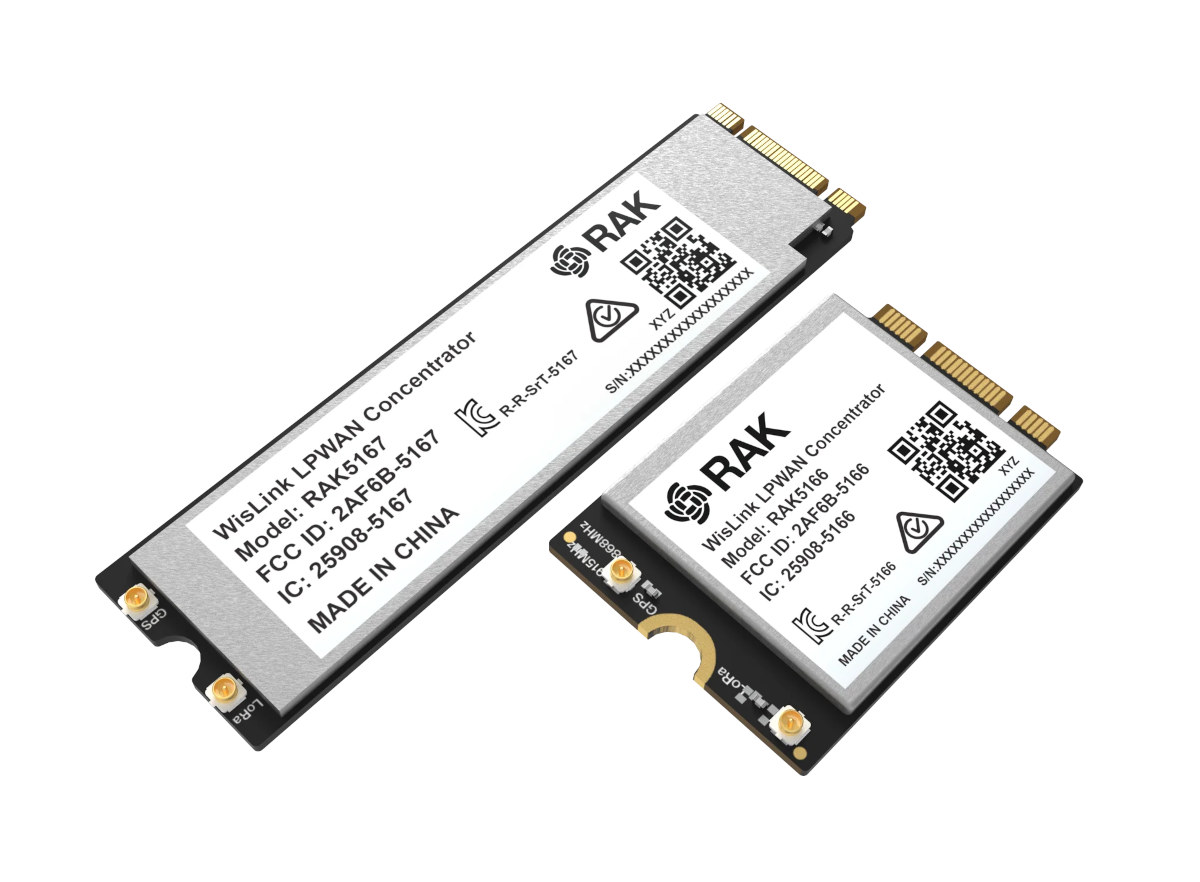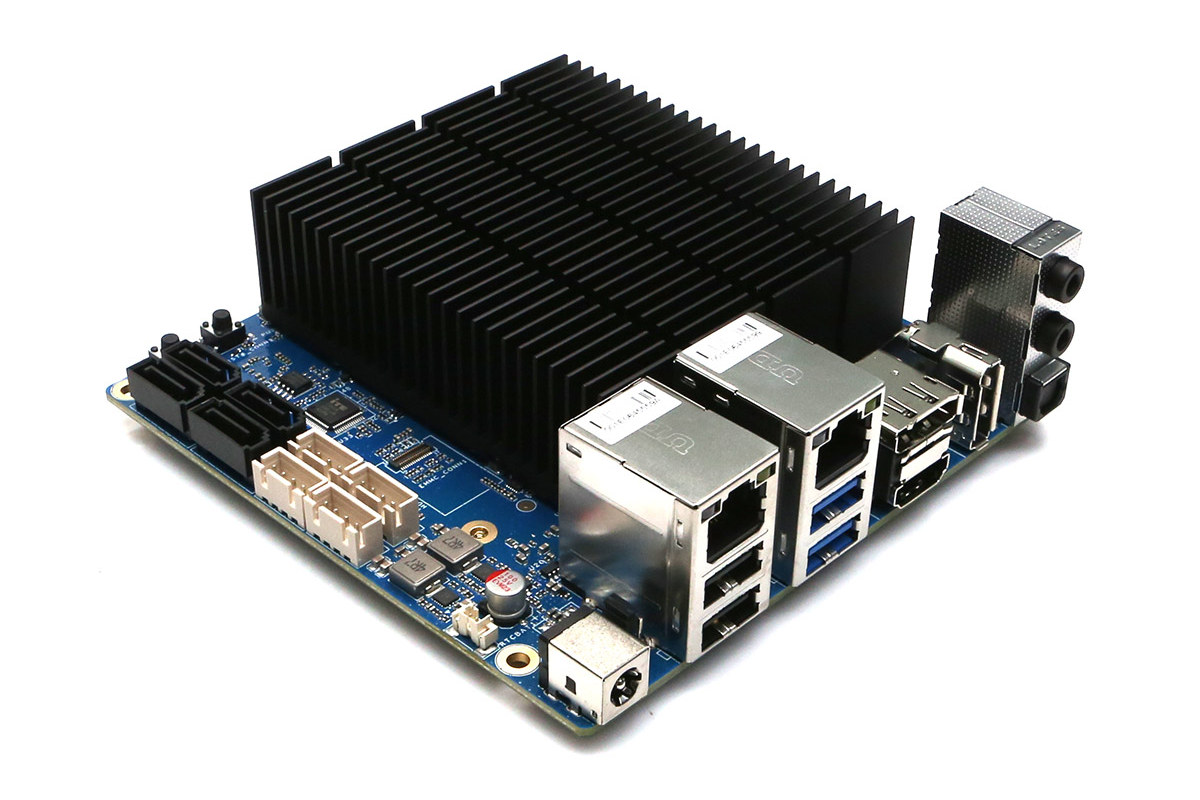Tomeu Vizoso has been working on an open-source driver for NPU (Neural Processing Unit) found in Rockchip RK3588 SoC in the last couple of months, and the project has nicely progressed with object detection working fine at 30 fps using the SSDLite MobileDet model and just one of the three cores from the AI accelerator. Many recent processors include AI accelerators that work with closed-source drivers, but we had already seen reverse-engineering works on the Allwinner V831’s NPU a few years ago, and earlier this year, we noted that Tomeu Vizoso released the Etvaniv open-source driver that works on Amlogic A311D’s Vivante NPU. Tomeu has now also started working on porting his Teflon TensorFlow Lite driver to the Rockchip RK3588 NPU which is closely based on NVIDIA’s NVDLA open-source IP. He started his work in March leveraging the reverse-engineering work already done by Pierre-Hugues Husson and Jasbir Matharu and was […]
ESP32-S3 PowerFeather board supports up to 18V DC for solar panel input
The ESP32-S3 PowerFeather board is an Adafruit Feather-shaped ESP32-S3 WiFi and BLE IoT board that can be powered by a Li-Ion or LiPo battery and supports up to 18V DC input for direct connection to a solar panel. The developer told CNX Software that the main differentiating factor from other ESP32-S3 development boards was “its extensive power management and monitoring features” with a wide DC input range, supply and battery monitoring, and battery protection features. ESP32-S3 PowerFeather specifications: ESP32-S3-WROOM-1-N8R2 MCU – ESP32-S3 dual-core Tensilica LX7 up to 240 MHz with 512KB SRAM, 16 KB RTC SRAM Memory – 2MB QSPI PSRAM Storage – 8MB QSPI flash Wireless – WiFi 4 and Bluetooth 5 LE + Mesh; PCB antenna USB – 1x USB-C 1.1 OTG port for power and programming Expansion 2x 16-pin 2.54 mm pitch headers with 23x multi-function GPIO: UART, I2C, SPI, I2S, SDIO, PWM, CAN, RMT, Camera, LCD […]
Infineon PSOC Edge E81, E83, E84 Cortex-M55/M33 MCUs target Machine Learning-enhanced IoT, consumer and industrial applications
Infineon PSOC Edge E81, E83, and E84 MCU series are dual-core Cortex-M55/M33 microcontrollers with optional Arm Ethos U55 microNPU and 2.5D GPU designed for IoT, consumer, and industrial applications that could benefit from machine learning acceleration. This is a follow-up to the utterly useless announcement by Infineon about PSoC Edge Cortex-M55/M33 microcontrollers in December 2023 with the new announcement introducing actual parts that people may use in their design. The PSOC Edge E81 series is an entry-level ML microcontroller, the PSOC Edge E83 series adds more advanced machine learning with the Ethos-U55 microNPU, and the PSOC Edge E84 series further adds a 2.5D GPU for HMI applications. Infineon PSOC Edge E81, E83, E84-series specifications: MCU cores Arm Cortex-M55 high-performance CPU system up to 400 Mhz with FPU, MPU, Arm Helium support, 256KB i-TCM, 256KB D-TCM, 4MB SRAM (Edge E81/E83) or 5MB SRAM (Edge E84) Arm Cortex-M33 low-power CPU system up […]
Industrial control board combines Raspberry Pi CM4/CM5 with STM32H7 MCU for real-time control
Paisley Microsystems PMC-C-CMX is a DIN-Rail mountable industrial control board taking a Raspberry Pi CM4 or CM5 (once launched), equipped with an STM32H7 Arm Cortex-M7 microcontroller for real-time control. The carrier board integrates features such as wide voltage input (7 to 55V DC), an M.2 PCIe Gen 3 Key-B and Key-M sockets with cellular option, gigabit Ethernet, HDMI and MIPI DSI display interfaces, twp MIPI CSI camera interfaces, and several headers and connectors with RS485, GPIO, I2S, SPI, and more connected to either the Raspberry Pi Compute Module or the STM32H7 MCU. Paisley Microsystems PMC-C-CMX specifications: Supported system-on-modules – Raspberry Pi CM4 or upcoming Raspberry Pi CM5 MCU – STMicro STM32H7B0 Arm Cortex-M7 microcontroller up to 280 MHz with 128KB flash, 1.4MB SRAM MCU <-> CM communication – UART and/or SPI Video Output 2x HDMI ports up to 4Kp60 2x MIPI DSI connectors Camera input – 2x MIPI CSI connectors […]
AAEON BOXER-8645AI Jetson AGX Orin-powered embedded AI system supports up to 8 GMSL2 cameras
AAEON BOXER-8645AI is an embedded AI system powered by NVIDIA Jetson AGX Orin that features eight GMSL2 connectors working with e-con Systems’ NileCAM25 Full HD global shutter GMSL2 color cameras with up to 15-meter long cables. The BOXER-8645AI is fitted with the Jetson AGX Orin 32GB with 32GB LPDDR5 and 64GB flash and up to 200 TOPS of AI performance. Other features include M.2 NVMe and 2.5-inch SATA storage, 10GbE and GbE networking ports, HDMI videos, and a few DB9 connectors for RS232, RS485, DIO, and CAN Bus interfaces. The embedded system takes 9V to 36V wide DC input from a 3-pin terminal block. AAEON BOXER-8645AI specifications: AI accelerator module – NVIDIA Jetson AGX Orin 32GB CPU – 8-core Arm Cortex-A78AE v8.2 64-bit processor with 2MB L2 + 4MB L3 cache GPU / AI accelerators NVIDIA Ampere architecture with 1792 NVIDIA CUDA cores and 56 Tensor Cores @ 1 GHz […]
Intel Processor U300/U300E penta-core Raptor Lake CPU find its way into mini PCs and network appliances
Some mini PCs and firewall/network appliances are starting to show up with the Intel Processor U300/U300E penta-core CPU on Aliexpress and Amazon. It looks to be a 15W entry-level part for the 13th Gen Raptor Lake processor that may provide a more powerful and slightly more expensive alternative to the popular Alder Lake-N Processor and Core i3-N305 SoCs. The Processor U300 offers one Performance core clocked at 1.10 GHz to 4.30 GHz (Turbo) and four Efficiency cores clocked at up to 3.20 GHz, with the embedded part (U300E) handling slightly lower max frequencies for a wider operating temperature range. As usual, the Performance core supports multi-threading, so the Processor U300 supports six threads. Intel Ark shows it can support up to 96GB DDR5-5200 RAM, embeds a 48EU Intel UHD Graphics capable of driving up to four independent displays, and offers 20 lanes of PCIe Gen4 (vs 9-lane for Alder Lake-N), […]
RAKwireless launches SX1303 based M.2 LoRaWAN concentrator modules and full-duplex gateway
RAKwireless has recently introduced two new LoRaWAN products with the RAK5166/67 WisLink M.2 3042/2280 concentrator module based on the Semtech SX1303 RF transceiver and the RAK7285 WisGate Edge Ultra Full-Duplex gateway for high-density network deployments, particularly for smart city infrastructure, metering applications, and other scenarios requiring reliable two-way communication at scale. RAK5166 and RAK5167 M.2 3042 and 2280 LoRaWAN concentrator modules RAK5166/RAK5167 specifications: Wireless Semtech SX1303 baseband processor with 8 x 8 channels LoRa packet detectors, 8x SF5-SF12 LoRa demodulators, 8x SF5-SF10 LoRa demodulators, one 125/250/500 kHz high-speed LoRa demodulator, and one (G)FSK demodulator Tx power up to 27 dBm Rx sensitivity down to -139 dBm @ SF12, BW 125 kHz Supports global license-free frequency band (EU868, IN865, RU864, US915, AU915, KR920, AS923-1, AS923-2, AS923-3, AS923-4) Listen Before Talk (LBT) support Fine Timestamp Built-in ZOE-M8Q GPS module (optional) 2x MHF4 IPEX connectors for the LoRa and GNSS (optional) antennas Host […]
ODROID-H4 – A Compact Alder Lake N-Series SBC with up to dual 2.5GbE and four SATA III ports
Hardkernel has just launched an upgrade to their ODROID-H3/H3+ Jasper Lake SBC, with the ODROID-H4, ODROID-H4+, and ODROID-H4 Ultra boards powered by Intel Processor N97 or Intel Core i3-N305 Alder Lake N-Series processors. The ODROID-H4 family supports up to 48GB DDR5-4800 memory and NVMe SSD storage, comes with up to two 2.5GbE, four SATA III ports, three 4K capable video output ports (HDMI and DisplayPort), a range of USB ports, and a 24-pin GPIO header. ODROID-H4 specifications compared to previous generation ODROID-H2+ and ODROID-H3 boards. The GPIO header offers the following interfaces for all models except for the ODROID-H2+: 2x I2C, 3x USB 2.0, 1x UART, 1x HDMI-CEC, ext. power button. The H2+ header has similar interfaces, but only one USB 2.0 and two UART. Some may note the maximum RAM capacity numbers differ from the data on Intel Ark, but the latter is not usually correct, and Hardkernel have […]



